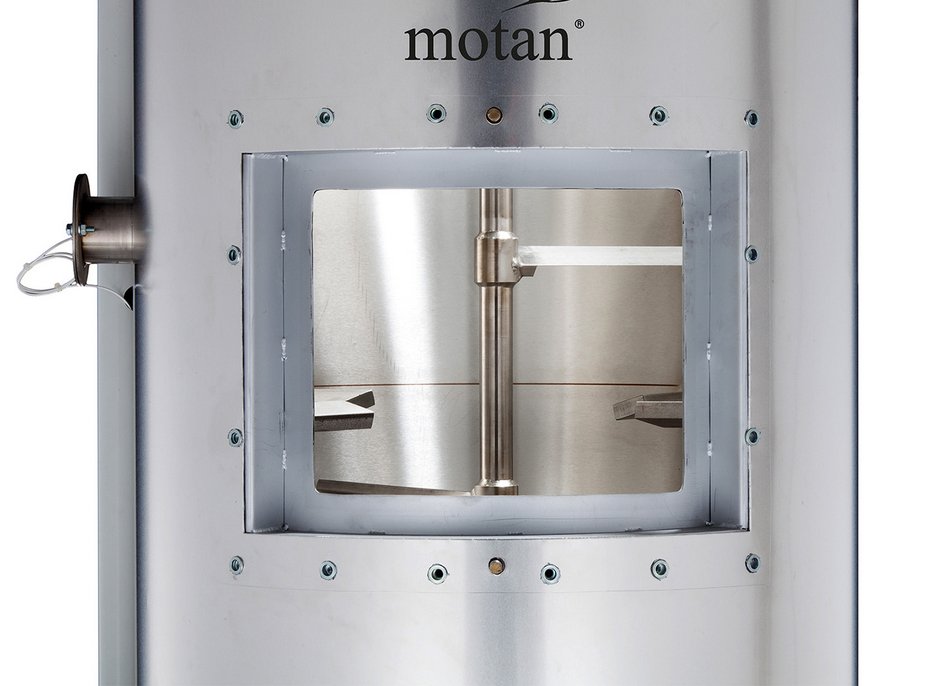60 - How does a crystalliser work?

Whether crystallising virgin material or regrind, it is a challenging process technology with a few specifics that need to be considered. One deciding factor is making sure that the material is heated as quickly as possible to glass transition temperature, and making sure that the material is continuously agitated during the softening phase to prevent it agglomerating (clumping).
Two common technologies for crystallisation of PET/PLA are infrared rotary drum systems (IRD) and fixed bed crystallisers with an agitator bin. No matter which technology is chosen, it is virtually impossible to achieve a crystallization degree of 100%. The maximum crystallisation degree achievable for PET, for example, is approximately 75%. The result is a “partly crystallised” material.
Inside the infrared rotary drums are infrared projectors. Spirals and mixing bars convey the material using rotation slowly from the material inlet to the outlet and keep it agitated. Depending on the specific design, IRD is suitable for continuous or batch operation.
The fixed bed crystallisers with agitator bins are an entirely different concept. They operate with hot air (hot fresh air), that flows through the material from below. In the bin is an agitator with multiple offset agitator arms that gently agitate the material. Stators on the bin’s inner walls additionally prevent too much agitation of the bulk material, meaning that in total relatively low forces are exerted onto the material. The crystallised material is extracted from the bottom end of the bin, for example via a slide valve or rotary valve.
The air flow can be supplied in three ways for agitator crystallisers – with adjustable amount of environmental air, in a closed or an open-air flow cycle. The open process in combination with air flow regulation and a heat exchanger is particularly effective.
Fixed bed crystallisers can be designed for either continuous or batch operation. In both cases one needs to make sure that no non-crystallised (amorphous) material can be extracted from the bin for further processing. To make sure of this, the exhaust air temperature can be monitored. Only once the required temperature has been reached, is the material released.
During a complete new filling, the amorphous material is conditioned with the help of a special “starting process”. In order to reach continuous operation more quickly, a certain amount of already crystallised material is added.
In order to ensure the required degree of crystallisation, the maximum throughput of the crystalliser must not be exceeded during continuous operation. Systems with automatic air flow regulation can increase the throughput range in which material is crystallised sufficiently and energy efficiently.
Do you want to see crystallizers in practice? Please visit www.motan.com
